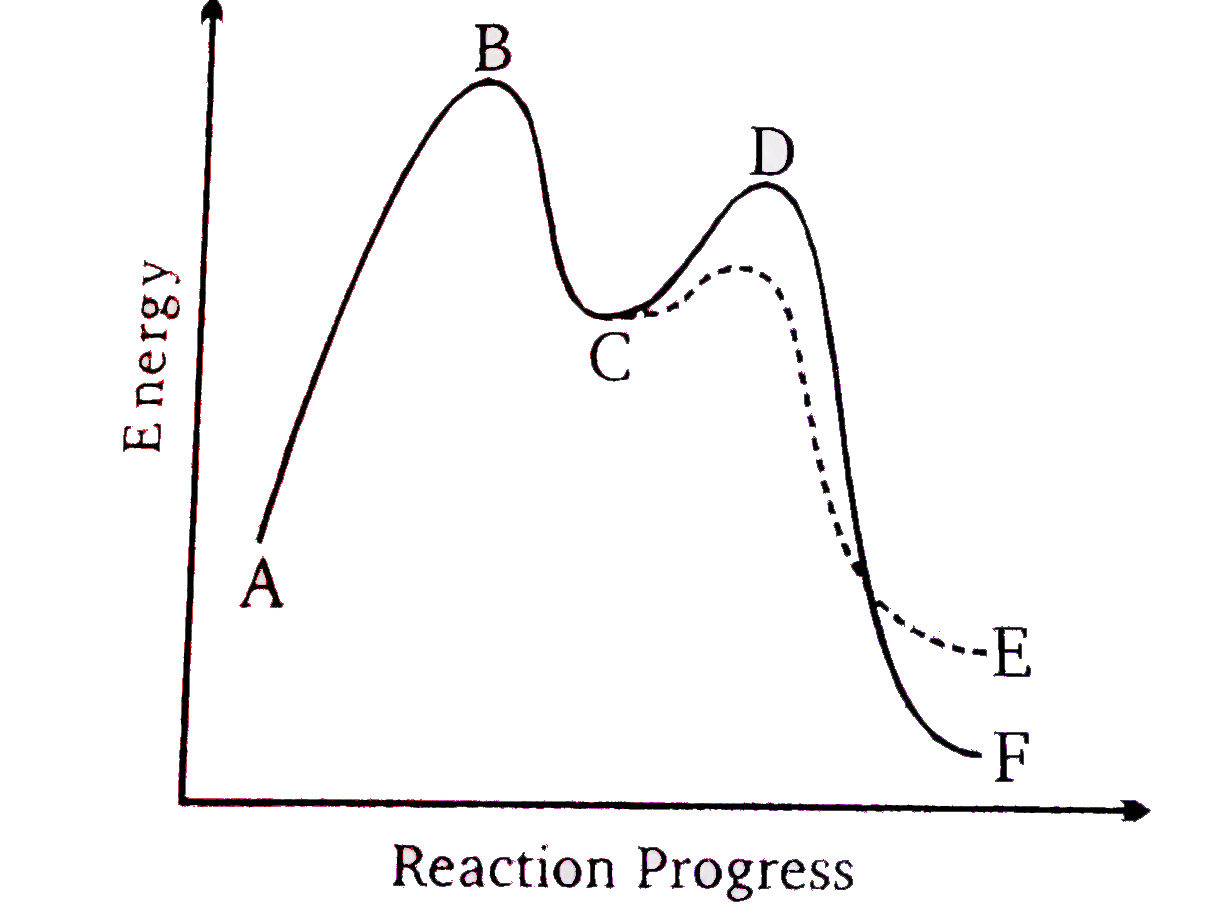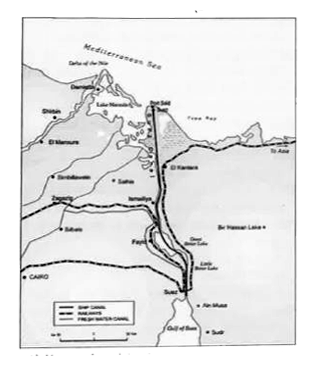Consider the potential energy diaram given below

(X) Name the positions A-D
(Y) Answer the following questions .
(I) Both reaction pathways are.
(II) which step is the rate determine step?
(III) which product is most stable ?
(iv) In accordance with Hammonds potulate , exothermixc reaction tend to have
Early transition states that are reasctant -like
Late trastion staes that are reactant -like
Earlty trnstion states thaat are product -like
Late transition states that are product-like
The correct Answer is:(X) A-reactiants ,B -transition sate, C-Inter mediate ,D-transtion state (YA) (I) Exothermic (II) B(III) F(IV) A
Basic informatin.
Topper's Solved these Questions
Similar Questions
Products are favored in a chemical reaction taking place at a constant temperature and pressure. Consider the following statements :
(i) The change in Gibbs energy for the reaction is negative.
(ii) the total change in Gibbs energy for the reaction and the surroundings is negative.
(iii) The change in entropy for the reaction is positive.
(iv) The total change in entropy for the reaction and the surrounding is positive.
The statments which are ALWAYS true are :
View SolutionEach of the questions below consists of a question and two statements numbered I and II given below it. You have to decide whether the data provided in the statements are sufficient to answer the question. Read both the statements and give answer
1) if the data in statement I alone are sufficient to answer the question while the data in statement II alone are not sufficient to answer the question.
2) if the data in statement II alone are sufficient to answer the question while the data in statement I alone are not sufficient to answer the question.
3) if the data either in statement I alone or in statement II alone are sufficient to answer the question.
4) if the data even in both statements I and II together are not sufficient to answer the question.
5) if the data in both statements I and II together are necessary to answer the question.
D is in which direction of P?
I. S is to the south of P, which is to the west of D.
II. P and R are in a straight line and R is to the south of D.
View Solution
Knowledge Check
Observe these compound and give answer of following questions

In the given aldose which can form same osazone
(I). D-Ribose
(II). D-arabinose
(III). D-iodose
(IV). D-galactoseAI & IIIBI,III,IVCI,IIDIII,IVA chemical reaction proceeds into the following steps
Step I, 2A⇔X fast
Step II, X+B→Y slow
Step III, Y+B⇔ product fast
The rate law for the overall reaction isARate =k[A]2BRate =k[B]2CRate = k [A][B]DRate =k[A]2[B]
Observe these compound and give answer of following questions.
Q. In the given Aldose which can form same osazone
(I). D-glucose
(II). D-glucose
(III). D-mannose
(IV). D-galactoseAI & IIIBI,III,IVCI,IIDIII,IV
Study of following map and answer the questions given below:

(i) Name the railway line shown in this map.
(ii) In which country does this railway line lie?
(iii) Name the station marked in the map as A and B.
View SolutionStudy the following map and answer the questions given below:
 (i) Name the shipping canal shown in the map.
(i) Name the shipping canal shown in the map.
(ii) Name the Northernmost and Southern most port cities of this canal.
(iii) Which two continents have made more use of this canal?
View SolutionEach of the questions below consists of a question and two statements numbered I and II given below it. You have to decide whether the data provided in the statements are sufficient to answer the question. Read both the statements and give answer
1) if the data in statement I alone are sufficient to answer the question while the data in statement II alone are not sufficient to answer the question.
2) if the data in statement II alone are sufficient to answer the question while the data in statement I alone are not sufficient to answer the question.
3) if the data either in statement I alone or in statement II alone are sufficient to answer the question.
4) if the data given in both statements I and II together are not sufficient to answer the question.
5) if the data in both statements I and II together are necessary to answer the question.
Z is in which direction with respect of X?
I. Y is to the South of X and Z is to the East of P, which is to the North of Y.
II. P is to the South of X.
View SolutionEach of the questions below consists of a question and two statements numbered I and II given below it. You have to decide whether the data provided in the statements are sufficient to answer the question. Read both the statements and give answer
1) if the data in statement I alone are sufficient to answer the question while the data in statement II alone are not sufficient to answer the question.
2) if the data in statement II alone are sufficient to answer the question while the data in statement I alone are not sufficient to answer the question.
3) if the data either in statement I alone or in statement II alone are sufficient to answer the question.
4) if the data even in both statements I and II together are not sufficient to answer the question.
5) if the data in both statements I and II together are necessary to answer the question.
Pillar 'X’ is in which direction with respect to pillar 'Y'.
I. Z is to the South of Y.
II. M is to the West of Z and to the South of X.
View SolutionStudy the following information carefully and answer the given questions :
A word and number arranegment machine when given an input line of words and numbets rearranges them following a particulat rule in each step. The following is an illustration of input and rearrangement
Input : car and home loan borrowers are being addressed.
Step I : addressed car and home borrowers are being loan
Step II addressed and car borrowers are being loan home
Step III : addressed and are borrowers being loan hime car
Step IV : addressed and are being loan home car borrowers
Step V : addressed and are loan home car borrowers
Spet V is the last step of the rearrangement of the above input
As per the rules followed in the above steps find out in each of the following questions the appropriate step for the given input
Input - each of the five questions has only one distinct answer.
Which word would be on fourth position from left in step II
View Solution
